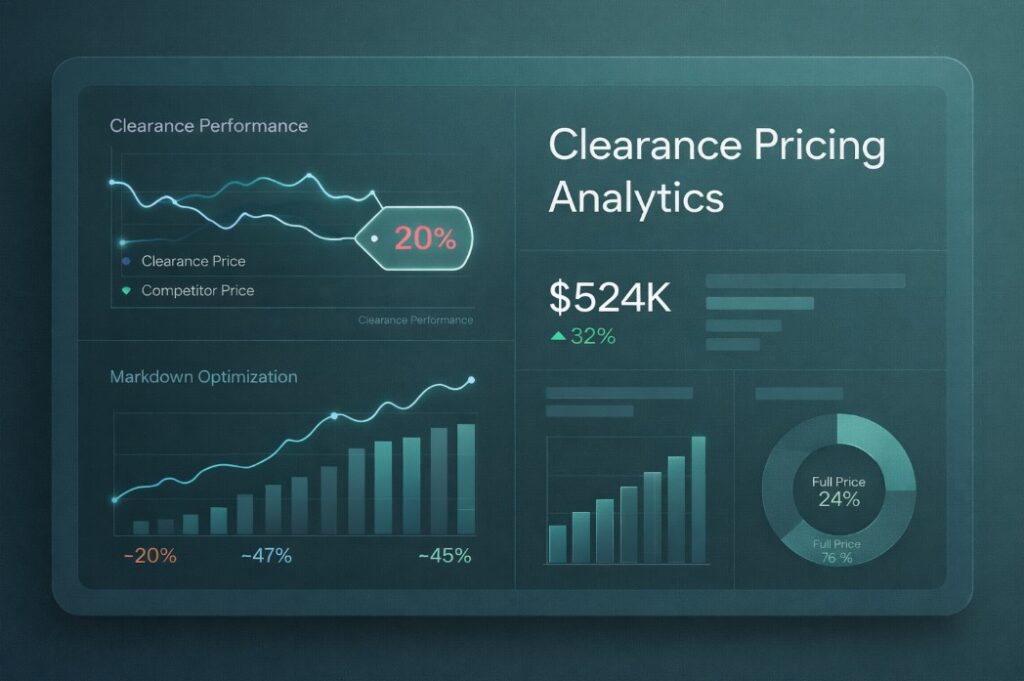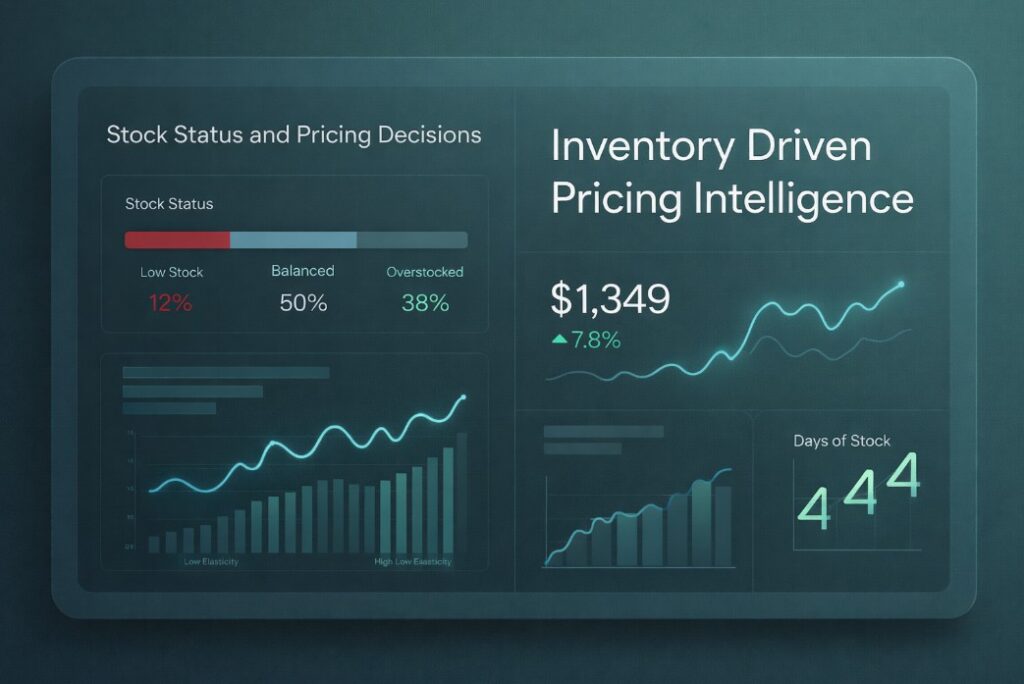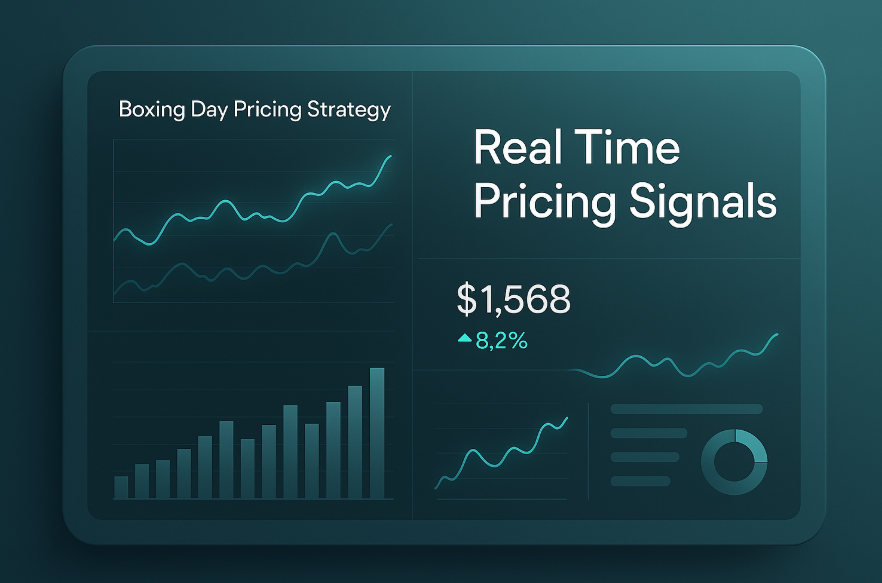- Product
- Solution for
For Your Industry
- Plans & Pricing
- Company
- Resources
For Your Industry

Tracking competitors manually might work for a few SKUs, but when your catalog grows into thousands, manual updates become impossible.
Modern eCommerce markets shift daily — sometimes hourly. By the time you finish collecting yesterday’s prices, they’ve already changed.
Automation enables faster reaction times, allowing pricing teams to make adjustments before competitors impact performance.
Brands that automate competitor tracking can anticipate market changes instead of merely reacting to them — staying agile and profitable.
Automation isn’t automatically accurate. Many retailers experience early frustration because their systems aren’t set up for data precision.
If your system misidentifies competitors’ products, your pricing intelligence becomes unreliable. A 5% error can distort key metrics and lead to poor pricing decisions.
Without real-time refresh cycles, your data quickly loses relevance. A “current” price from 24 hours ago may no longer reflect the market.
Automation that tracks only base prices misses vital promotional activity — skewing competitive analysis.
Raw data without validation leads to noise, duplicates, and inaccuracies that erode trust in your pricing system.
To automate effectively without losing accuracy, start with a strong foundation.
Accuracy begins with reliable input. Use verified, structured feeds that update continuously from trusted marketplaces and retailer sites.
Machine learning models analyze product names, SKUs, and features to ensure the right match — even when descriptions differ across retailers.
Continuous data collection captures live changes, allowing teams to react instantly to market movements.
A robust system includes rule-based verification (e.g., price outliers, data gaps) to flag inconsistencies before they affect your pricing.
Here’s how to build (or improve) a competitor tracking system that’s fast and reliable.
Start by identifying which competitors, channels, and products you’ll track. Too broad, and you’ll drown in data; too narrow, and you’ll miss key insights.
Pro Tip: Focus on competitors who consistently overlap your product categories or target audience.
Automated web crawlers, APIs, or data partnerships capture competitor prices directly from online sources.
Make sure your data feed includes:
Product names and IDs
Price (with and without tax)
Promotion flags and discount information
Stock status
tgndata Insight:
tgndata’s automated price tracking delivers fresh, structured competitor data multiple times a day — with built-in validation to prevent errors.
Use AI-based product matching to link your SKUs with equivalent competitor products.
Modern algorithms use:
Text similarity (title, description, brand)
Attribute comparison (size, color, model)
Image matching (visual verification for ambiguous listings)
This ensures you’re comparing apples to apples — not apples to accessories.
Accuracy comes from verification layers.
Automated checks can detect:
Missing values or duplicates
Implausible price deviations
Unusual promotion patterns
When an anomaly appears, the system flags it for manual review before it distorts analytics.
Once your data is accurate, automation can deliver smart alerts — notifying you when:
A competitor drops prices below your thresholds
A product enters or exits promotion
Price parity breaks across marketplaces
These alerts empower teams to act fast without manual monitoring.
Don’t let your data sit in silos. Integrate automated price tracking with:
Pricing systems (for automatic updates)
Marketing dashboards (for promotion alignment)
Sales tools (for negotiation support)
This creates an end-to-end feedback loop that drives consistent, informed pricing decisions.
Follow these principles to ensure long-term data precision.
| Best Practice | Why It Matters |
|---|---|
| Use Verified Sources | Prevents false or manipulated data from unreliable sites. |
| Refresh Frequently | Keeps your insights real-time and decision-ready. |
| Set Validation Rules | Detects errors automatically and ensures consistency. |
| Benchmark Accuracy Regularly | Measures data precision over time. |
| Human-in-the-Loop Review | Maintains accountability for flagged data points. |
| Mistake | Impact | Prevention |
|---|---|---|
| Implementing without clear KPIs | Unclear ROI | Define metrics before starting |
| Relying only on AI | Loss of control | Combine automation with human judgment |
| Ignoring data quality | Model inaccuracy | Conduct a full data audit |
| Overpricing during demand peaks | Customer backlash | Apply ethical guardrails |
| Neglecting perception tracking | Brand damage | Monitor fairness and transparency |
Avoiding these ensures sustainability and trust — not just profitability.
The benefits of combining automation with accuracy are measurable:
Faster Decisions: Cut manual collection time by up to 90%.
Higher Confidence: Ensure your pricing, promotions, and forecasts rely on verified data.
Profit Protection: Detect competitor price shifts early and avoid unnecessary markdowns.
Operational Efficiency: Reallocate team effort from manual work to strategy.
When done right, automated price tracking becomes not just a data pipeline — but a competitive advantage.
A leading European retailer struggled with inconsistent competitor data across thousands of SKUs. Manual tracking produced 20% error rates and slow response times.
After implementing tgndata’s automated competitor price tracking and promotion alerts, the retailer:
Achieved 99.2% product match accuracy
Reduced reaction time to competitor changes from 24 hours to 30 minutes
Increased pricing decision confidence across commercial teams
Automation no longer meant compromise — it meant clarity.
At tgndata, we combine automation with precision. Our platform enables you to:
Track competitor prices and promotions in real time
Use AI-based product matching for unmatched accuracy
Receive automated alerts for actionable insights
Integrate data seamlessly across pricing, sales, and marketing systems
With tgndata, you can automate confidently — knowing your pricing intelligence is always accurate, current, and actionable.
Explore tgndata’s Competitor Price Tracking Solutions →
Read: How to Spot Competitor Price Changes Before They Impact You →
Read: Profit Margin Optimization: Data-Driven Strategies That Work →
Competitor price tracking should never be a choice between speed and accuracy. The most successful pricing teams achieve both — using automation backed by data quality, validation, and continuous monitoring.
With tgndata, automation becomes an advantage, not a risk. You get real-time competitor insights with unmatched accuracy — empowering your business to stay proactive, competitive, and profitable.
Talk to tgndata about automating price tracking accurately →













Missing an important marketplace?
Send us your request to add it!